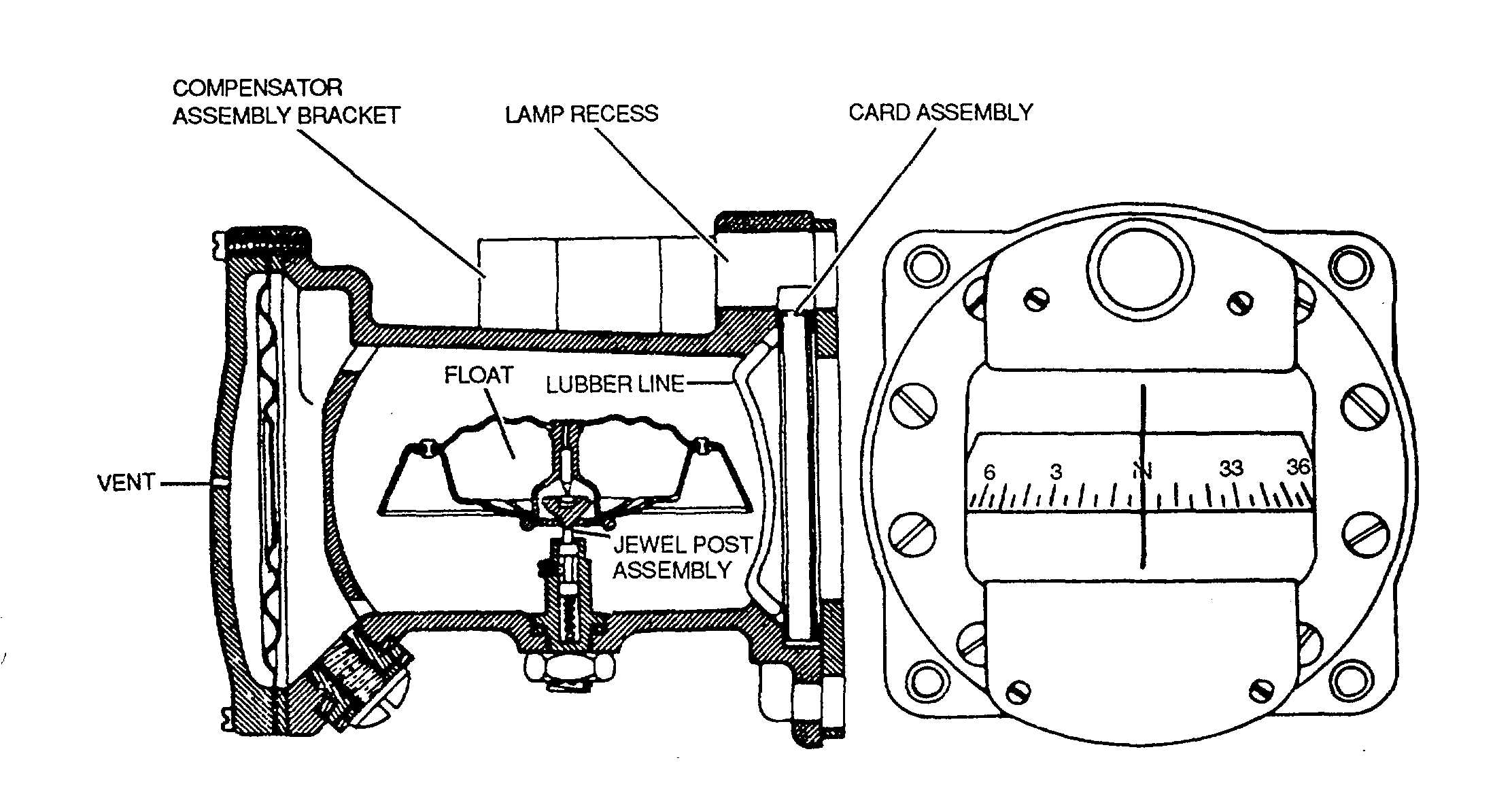TM 1-1500-204-23-4
(1)
Principles of operation. A magnetic
compass operates on the principle of magnetic
attraction. The magnets, which are free to pivot in a
horizontal plane, will assume a position with the north-
seeking ends pointing toward the earth's north magnetic
pole. The magnetic heading is read by reading a
compass card attached to the float.
(2)
Compass errors. Magnetic variation and
magnetic deviation are explained in the following
paragraphs.
(a)
Magnetic
variation.
Magnetic
variation is the angular difference in degrees between
the geographic north pole and the magnetic north pole.
This variation is caused by the magnetic field, which is
constantly changing. Since variation differs according
to geographic location, its effect on the compass cannot
be removed by any type of compensation. Variation is
called west variation when the earth's magnetic field
draws the compass needle to the left of the geographic
north pole and east variation when the needle is drawn
to the right of the geographic north pole.
(b)
Magnetic
deviation.
Magnetic
deviation is the magnetic disturbances within the aircraft
that deflect the compass needle from alignment with
magnetic north. Compasses must be checked and
periodically compensated by adjustment. Deviations
remaining after adjustment are recorded on a compass
correction card, as shown in figure 4-20, mounted near
the compass.
(3)
Compass
compensation.
Compass
compensation
frequency
requirements,
pre-
compensation instructions, compass rose method of
compensating, and the B-16 master sighting compass
method of compensating are explained in the following
paragraphs.
(a)
Compensation
frequency
requirements. Compass will be checked for accuracy,
compensated when necessary, and readings recorded
on DD Form 1613 (Pilot Compass Correction Card) at
the following times:
·
At least once during each 12 month period
Figure 4-19. Magnetic Compass
4-25

